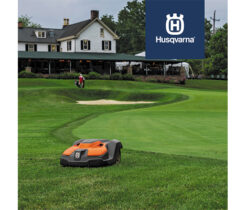A look into the future: How robotic mowers may benefit your course
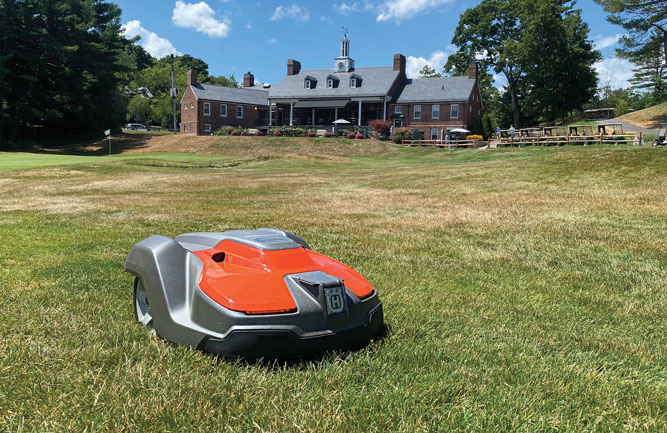
Photo: Robert T. Lynch Municipal GC
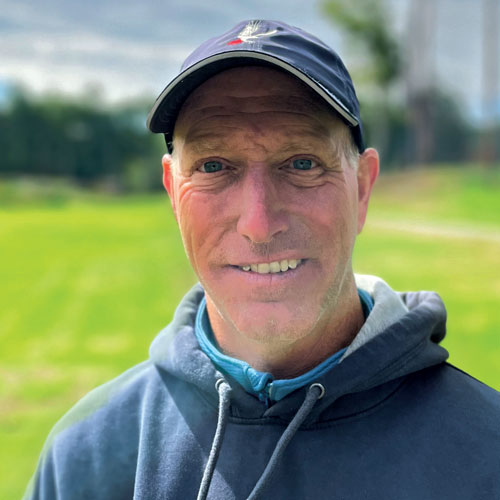
Photo: Mike Murphy
Mike Murphy’s crew at Robert T. Lynch Municipal GC in Brookline, Mass., varies in size from day to day. At peak season, on a good day, he’ll have 11 or 12 people working on the course. On a day like today, including himself, he has four-and-a-half people.
His crew is now supported by a hard-working novelty act around the clubhouse: two robotic mowers that mow 16 to 18 hours a day. The robotic mowers are especially useful around the clubhouse because they’re silent and don’t detract from the serenity of the clubhouse with unwanted mower engine noise. But while they were brought to the course to go unheard, they have also stood out as an endearing duo to the golfers.
“It’s become a novelty. People will just sit and watch them; it’s hysterical,” Murphy says. “They get really interested and ask,‘what are they doing?’ and I tell them, that’s a lawnmower.” While the golfers have gotten a kick out of watching the random pattern of the robots, Murphy and his team enjoy the added benefits of bringing the two robots on the team.
Watch and learn
Murphy learned of the robots from a company he already did business with, Boston-area tech company GreenSight Agronomics. Murphy utilizes the company’s job board at Robert T. Lynch. When GreenSight started working with robotic mowers, he told the company he wanted to give them a try.
Murphy designated an area near the clubhouse as a good location for the mowers. They mow around the 18th green, around the 9th green and the practice area. They also mow about 100 yards of rough on each hole.
The obvious benefit to Murphy was his crew had one less area to mow. There were additional benefits he realized over time.
“It’s basically cutting this area three times a week, and with a razor blade,” Murphy says. “It’s really increasing turf health. Compaction isn’t an issue; it only weighs 12 to 15 pounds. There are no clippings. There’s no dust blowing around. It really has been so beneficial in so many ways that it has increased the environment tenfold.”
To set up the mowers, Murphy downloaded the TurfCloud app on his phone. Then he drove the mowers around the area he wanted them to mow like he would drive a remote-controlled car. He says it was similar to setting GPS limitations on a golf cart.
Once he set the boundaries, the mowers went to work. They mow for five or six hours, then take a 60- to 90-minute break to recharge. Once they’ve recharged, they go back out. When Murphy pulls up to work each morning, he sees the headlights of the mowers already in action.
The mower also adjusts its height of cut automatically, so it can go from cutting rough to approach height without stopping.
Sustainability factor
Jason VanBuskirk, vice president of sales and marketing for GreenSight Agronomics, says the robotic mowers — Husqvarna’s 550 EPOS — were particularly welcome at Robert T. Lynch because of the environmental benefits the machines offer.
“Being a town-run golf course in a city like Brookline, they care very much about their surroundings, their environment and the sustainability factor,” VanBuskirk says. “The carbon footprint and the sustainability factor of using a robotic mower is a big deal.”
VanBuskirk says GreenSight recently signed a reseller agreement with Husqvarna in July for the robotic mowers. Currently, the company has three golf courses using the robots, as well as Major League Baseball’s San Francisco Giants.
Since the mowers rely on satellites, it’s important the area for the mowers have an open sky and a high point for a reference station. Once that is determined, a power source, preferably somewhere out of sight and out of mind, is needed to set up the recharging station.
VanBuskirk adds that he jokes with superintendents and mechanics that the height of cut adjustment is the easiest height adjustment they’ll ever make since it comes at the touch of a button right inside the app. Changing the blades is also easily done with a Phillips head screwdriver.
“You don’t have that heavy footprint of a bigger unit. You don’t have the wear and tear of a reel mower. These units are using a razor blade; it’s a very clean cut. The frequency of cut also adds to that because you don’t see what you see from a rough unit — a lot of clip,” VanBuskirk says. “When the rough is growing to 3 1/2 inches, you mow it down and there’s a lot of clip left behind. Now you need another man to come out with a blower. Maybe you don’t have the chance to get over there because you lack the manpower. With the robotic mower, that’s not a concern anymore.”
Justin Lawson, PGA, general manager at Robert T. Lynch, says bringing the robotic mowers to the course was a ‘no-brainer.’ “Robotics is a key element of being efficient with a scarce skilled and unskilled workforce,” Lawson says. “They also allow us to be more environmentally friendly at the same time, which is absolutely critical at a time when climate change is a part of our everyday life. We are committed to being at the forefront of technology and how it can work for us.”
Mowers in action
Lawson calls Murphy ‘the ultimate superintendent’ and says he’s lucky to get to work with him. When it comes to the robots, he’s happy Murphy embraced them and gave them a chance. He says Murphy is a visionary who likes to lead.
Murphy says area superintendents and sales reps have been stopping by Robert T. Lynch to check out the mowers in action. He says it takes a while to sit and watch and see what the robots are capable of. His colleagues have told him they see how robotic mowers could possibly be put to use at their courses.
“Your clubhouse grounds area, you could be having a wedding in your clubhouse or something, and these things keep moving,” Murphy says. “If I hadn’t been experimenting with them already, I’d be skeptical. Could they take over (all) mowing down the line? Maybe. But they definitely have applications that are useful right now.”
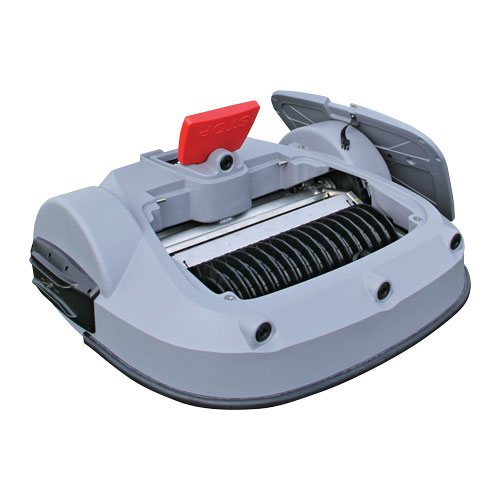
Photo: Echo Robotics
Rise of the machines
What it is: Echo Robotics autonomous range picker
What they say: “It’s completely autonomous. You can pick 24/7,” says Joe Fahey, vice president of product service and robotics. “Our experience is all good course managers pick the balls before they go home. With this, you can go home early, because when you come back in the morning, all the balls will be gone. Each unit has a capacity of 300 balls. It counts them and then drops them and then goes out and picks some more. On a normal cycle, it’ll pick up 12,000 balls.”
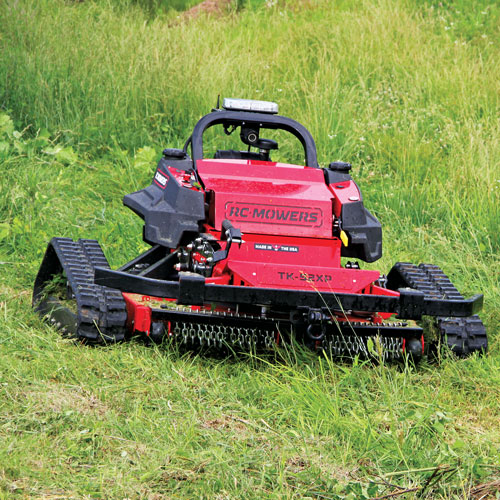
Photo: RC Mowers
What it is:RC Mowers TK-52XP remote-controlled slope mower
What they say: “It’s a mower on tracks, and it’s designed to mow extreme landscapes: steep slopes, hazardous areas, wet areas,” says Tim Kubista, vice president of sales and marketing, RC Mowers. “It’ll take on heavy brush, and it can mow steep angles. Two reasons people buy it: one is safety. People who have had rollover accidents, will purchase this and mow in a safe manner. Other folks know the work isn’t safe, and they’re doing the work by hand with string trimmers. This replaces that manual labor.”
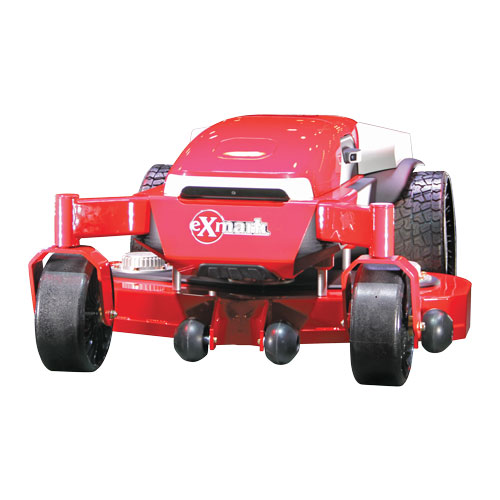
Photo: Exmark
What it is: Exmark autonomous mower prototype
What they say:“We’re committed to giving our customers tools that deliver a competitive advantage,” says Daryn Walters, general manager, Exmark. “When the technology is ready, and the timing is right for the marketplace, Exmark will be ready. As an industry, we’re still working to fully understand where autonomous and robotic equipment fit into the equation. We see a big future for autonomous and robotic mowers. We’re excited for what the future holds and are prepared to give our customers the tools they need to succeed.”









